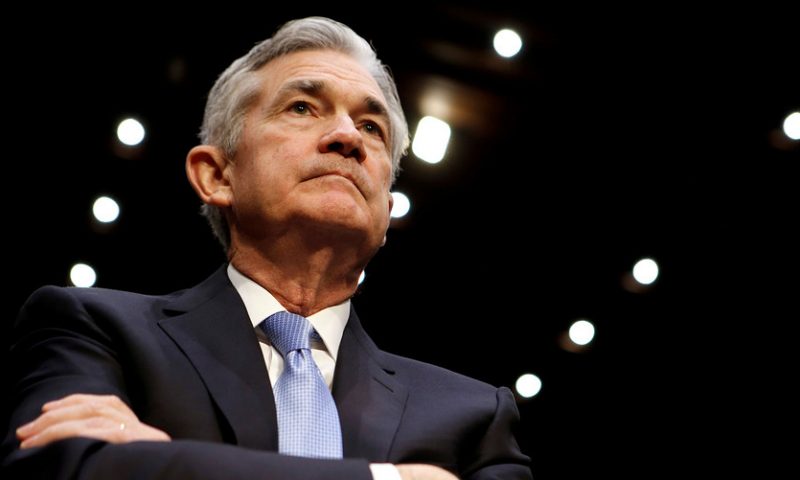Fed may hike IOER rate, widely seen as a technical adjustment. But how will the market take it?
The Federal Reserve seems on course to disappoint financial markets at some point this year, but maybe not this week.
Starting early in 2019, the Fed has consistently moved in a market-friendly direction. The central bank cut rates its benchmark interest rate three time since July and started expanding its balance sheet in October at a $60 billion per-month pace of Treasury bill purchases. It has also been lending billion of dollars into the short-term money market.
Stocks rallied, credit spreads tightened further and the dollar fell, all easing financial conditions.
But with valuations higher, sentiment positive and fundamentals still soft, Fed policy is now carrying a heavy load, said Andrew Sheets, chief cross-asset strategist at Morgan Stanley.
Morgan Stanley experts think the Fed wants to end its $60 billion-a-month purchases of Treasury bills at the end of April and let its balance sheet plateau. In its place, they expect a smaller $15 billion-a-month of purchases across the Treasury curve, Sheets said. Mark Cabana of Bank of America Global Research thinks the Treasury-bill purchases will continue through June but might be tapered. He thinks the lending to the repo market will end in May.
Such policy shifts could rattle the stock market, said Diane Swonk, chief economist at Grant Thornton.
“Many financial market participants believe that the liquidity provided by the Fed has helped to boost stock prices above and beyond what rate cuts along could do; any moves to stop that growth could show up as a loss in momentum for stock prices,” Swonk said.
Fed Chairman Jerome Powell has stressed that the expansion of the balance sheet isn’t a form of quantitative easing, meant to stimulate the economy by driving down long-term interest rates. But a lot of commentators do. And even Dallas Fed President Robert Kaplan thinks the purchases are having “QE-like effects.”
Fed officials will meet on Tuesday and Wednesday this week to deliberate about the balance sheet, money-market lending and the appropriate level of short-term interest rates.
“Clearer communication is needed to allay concerns among investors that an end to building reserves will pull the rug out from under risk assets. The Fed aims to enter the spring with ample reserves and does not see its purchases of T-bills as a key factor in driving risk assets higher,” said Ellen Zentner, chief economist at Morgan Stanley.
Economists don’t anticipate any change in balance-sheet policy at this week’s policy meeting. But there could be one small step that could test the Fed and market’s relationship.
The Fed is widely expected to make a technical hike to the interest it pays on excess reserves, raising this IOER rate 5 basis points to 1.6%. The Fed’s lending has moved the rate lower. Economists will be watching to see if there is any market reaction.
Mike Feroli, top Fed watcher at JP Morgan Chase, thinks there will be minimum response to the move.
“The markets and the public seem to have understood that these technical adjustments do not represent a change in the stance of monetary policy and we expect that to continue to be the case,” Feroli said, in a note to clients.
On the other hand, Derek Holt, head of capital markets economist at Scotiabank, sees some trepidation at the Fed.
“The FOMC may wish to avoid even the slightest difficulty communicating why they are hiking anything without massaging markets first,” Holt said.
Stephen Stanley, chief economist at Amhert Pierpont, thinks any hike in the IOER rate “would be premature and ill-considered.” He wants the Fed to raise the interest rate on its money-market loans instead.
Outside of the balance sheet, economists expect a relatively quiet Fed meeting.
In their speeches, central bankers have signaled that the benchmark rate is likely to remain in a range between 1.5%-1.75% for the near future. They talk of an economy and interest-rate policy as both in “a good place.”
Officials have also talked about the need for a material change in the outlook to get the Fed to move rates in either direction. There hasn’t been much economic data since the last Fed meeting in mid-December and nothing that casts significant doubt on the Fed’s forecast of a modest slowdown this year. While some downside risks have eased, low inflation warrants the accommodative policy stance, officials say.
Don’t expect fireworks from the press conference either.
“Chair Powell has taken a much more careful approach to his press conferences in recent months and we don’t expect much news to come out of this event,” Feroli of JP Morgan said.

